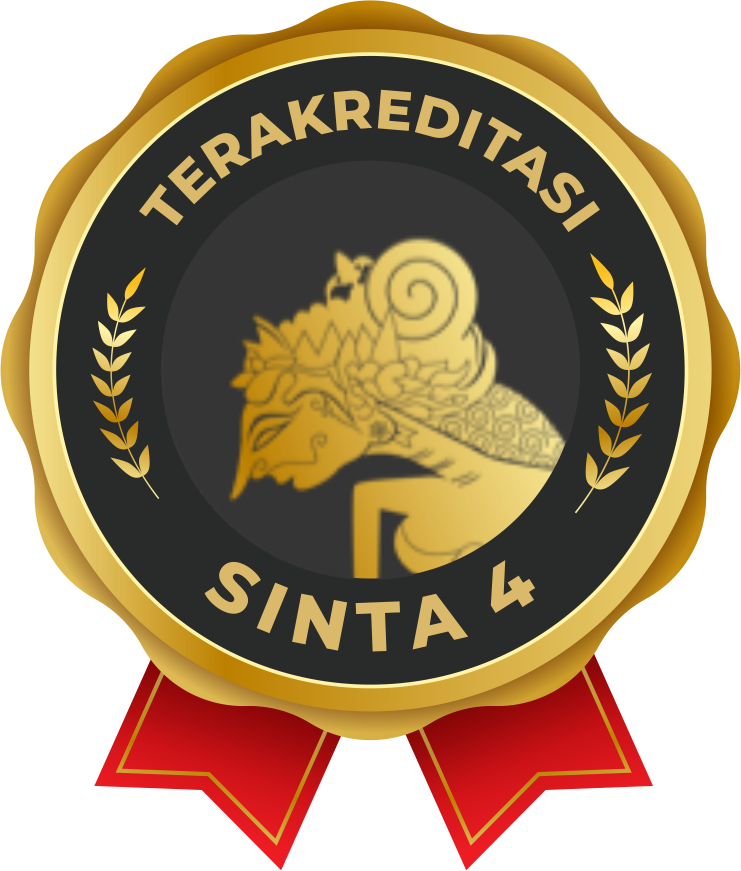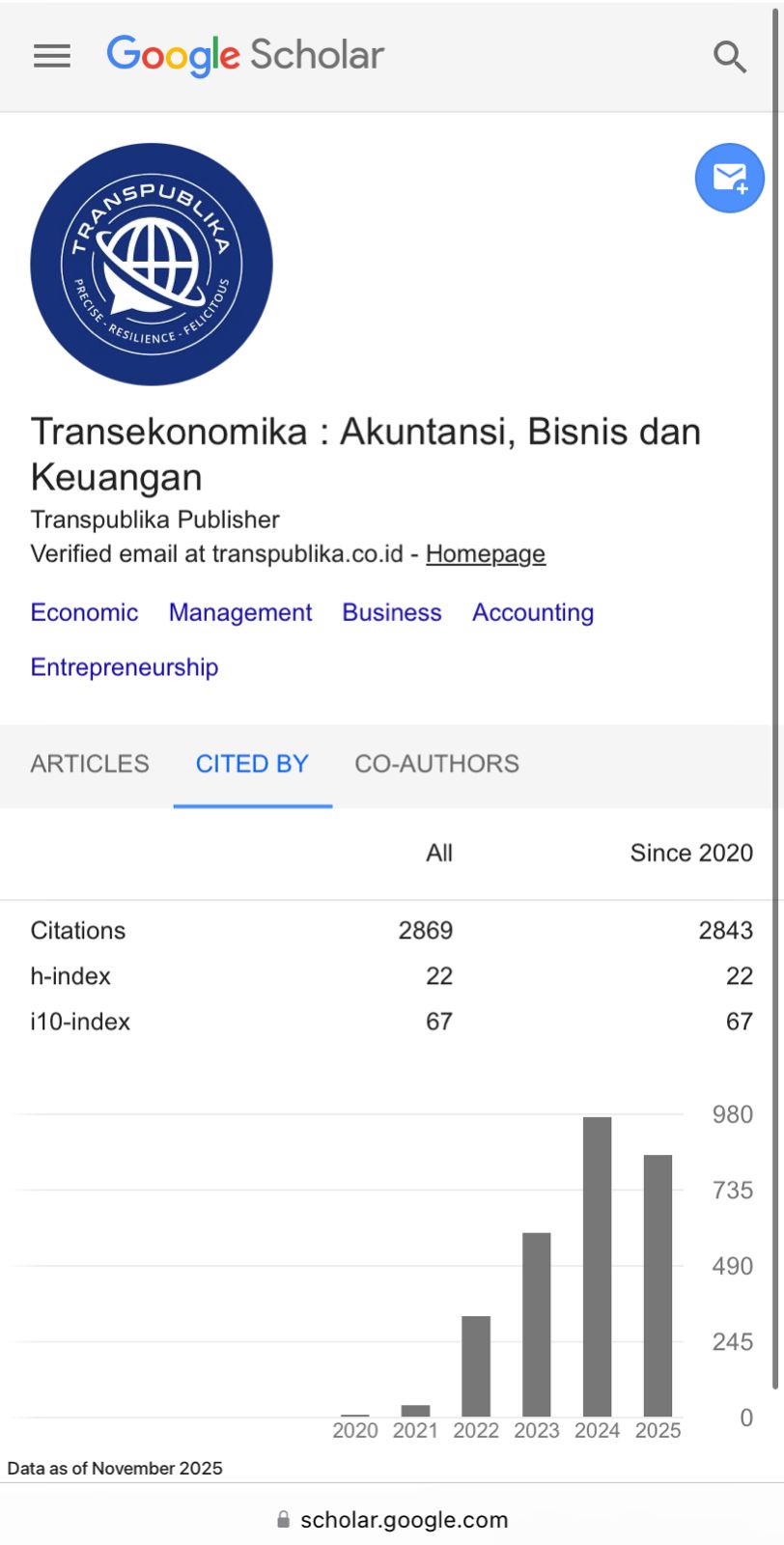MODERASI MONEY ATTITUDE DAN MEDIA EXPOSURE DALAM MODEL GAMBLING BEHAVIOR PADA MAHASISWA AKUNTANSI
Abstract
This study examines the effect of gambling motives on gambling behaviour with money attitude and media exposure as moderating variables in accounting students. The sample of this study amounted to 101 accounting students who were randomly selected. The analysis technique used is SEM PLS with the help of the SmartPLS3.0 application. The results of this study indicate that gambling motives have a significant influence on gambling behaviour, but money attitude and media exposure do not moderate this influence. This study contributes to the literature on gambling behaviour and can be a consideration for the world of education to educate students regarding the risks of gambling. The current study targeted interventions and educational programs are required for gambling behavior among university students, in particular, those studying finance-related subjects. Therefore, these findings can be useful in the design of curriculum elements which have the aim of raising the awareness of students about the risks of gambling and financially responsible behaviors.
Downloads
References
Azizah, C. U., & Utami, B. B. K. (2024). Integrasi Reputasi Lembaga sebagai Variabel Mediasi dalam Memprediksi Minat Muzakki Berzakat di LazisMu. Jurnal Ilmiah Akuntansi Manajemen, 7(1), 36-47. https://doi.org/10.35326/jiam.v7i1.5197
Binde, P. (2014). Gambling advertising: A critical research review.
Chin, W. W. (1998). Commentary: Issues and Opinion on Structural Equation Modeling. MIS Quarterly, 22(1), vii–xvi. http://www.jstor.org/stable/249674
Chóliz, M. (2010). Cognitive Biases and Decision Making in Gambling. Psychological Reports, 107(1), 15–24. https://doi.org/10.2466/02.09.18.22.pr0.107.4.15-24
Cotte, J., & Latour, K. A. (2009, February). Blackjack in the Kitchen: Understanding Online versus Casino Gambling. Journal of Consumer Research, 35(5), 742–758. https://doi.org/10.1086/592945
de Vreese, C. H., & Neijens, P. (2016, April 2). Measuring Media Exposure in a Changing Communications Environment. Communication Methods and Measures, 10(2–3), 69–80. https://doi.org/10.1080/19312458.2016.1150441
Di Censo, G., Delfabbro, P., & King, D. L. (2024). The impact of gambling advertising and marketing on young people: A critical review and analysis of methodologies. International Gambling Studies, 24(1), 71-91. https://doi.org/10.1080/14459795.2023.2199050
Gainsbury, S. M., Russell, A., Hing, N., Wood, R., Lubman, D., & Blaszczynski, A. (2015). How the Internet is changing gambling: Findings from an Australian prevalence survey. Journal of Gambling Studies, 31, 1-15. https://doi.org/10.1007/s10899-013-9404-7
Hing, N., Cherney, L., Blaszczynski, A., Gainsbury, S. M., & Lubman, D. I. (2014). Do advertising and promotions for online gambling increase gambling consumption? An exploratory study. International Gambling Studies, 14(3), 394-409. https://doi.org/10.1080/14459795.2014.903989
Kristiansen, S., & Severin‐Nielsen, M. K. (2022). Adolescent gambling advertising awareness: A national survey. International Journal of Social Welfare, 31(2), 263-273. https://doi.org/10.1111/ijsw.12501
Kusumo, D. N., Ramadhan, M . R., & Febriyanti, S. (2023). Maraknya Judi Online Di Kalangan Masyarakat Kota Maupun Desa. Perspektif, 2(2). https://doi.org/10.53947/perspekt.v2i3.391
Lee, H. P., Chae, P. K., Lee, H. S., & Kim, Y. K. (2007, February). The five-factor gambling motivation model. Psychiatry Research, 150(1), 21–32. https://doi.org/10.1016/j.psychres.2006.04.005
Legault, L. (2017). Self-Determination Theory. In: Zeigler-Hill, V., Shackelford, T. (eds) Encyclopedia of Personality and Individual Differences. Springer, Cham. https://doi.org/10.1007/978-3-319-28099-8_1162-1
Li, D., Jiang, Y., An, S., Shen, Z., & Jin, W. (2009, June 12). The influence of money attitudes on young Chinese consumers’ compulsive buying. Young Consumers, 10(2), 98–109. https://doi.org/10.1108/17473610910964688
Ma, X., Kim, S. H., & Kim, S. S. (2014, September). Online Gambling Behavior: The Impacts of Cumulative Outcomes, Recent Outcomes, and Prior Use. Information Systems Research, 25(3), 511–527. https://doi.org/10.1287/isre.2014.0517
Macey, J., & Hamari, J. (2018). eSports, skins and loot boxes: Participants, practices and problematic behaviour associated with emergent forms of gambling. New Media & Society, 21(1), 20–41. https://doi.org/10.1177/1461444818786216
Noble, N., Freund, M., Hill, D., White, V., Leigh, L., Lambkin, D., Scully, M., & Sanson-Fisher, R. (2022, December). Exposure to gambling promotions and gambling behaviours in Australian secondary school students. Addictive Behaviors Reports, 16, 100439. https://doi.org/10.1016/j.abrep.2022.100439
Pitt, H., McCarthy, S. and Thomas, S. (2023), "The Impact of Marketing on the Normalisation of Gambling and Sport for Children and Young People", McGee, D. and Bunn, C. (Ed.) Gambling and Sports in a Global Age (Research in the Sociology of Sport, Vol. 18), Emerald Publishing Limited, Leeds, pp. 169-183. https://doi.org/10.1108/S1476-285420230000018011
Putri, A. A. (2023, December 15). Transaksi Judi Online di Indonesia Sudah Mencapai 200 Triliun, Kominfo Berantas Platform Judi Online! GoodStats. https://goodstats.id/article/transaksi-judi-online
Ramayah, T. J. F. H., Cheah, J., Chuah, F., Ting, H., & Memon, M. A. (2018). Partial least squares structural equation modeling (PLS-SEM) using smartPLS 3.0. An updated guide and practical guide to statistical analysis, 967-978.
Sleczka, P., Braun-Michl, B., & Kraus, L. (2020, October 12). Gamblers’ attitudes towards money and their relationship to gambling disorder among young men. Journal of Behavioral Addictions, 9(3), 744–755. https://doi.org/10.1556/2006.2020.00042
Stetzka, R. M., & Winter, S. (2021). How rational is gambling? Journal of Economic Surveys, 37(4), 1432–1488. https://doi.org/10.1111/joes.12473
Stewart, S. H., & Zack, M. (2008, June 28). Development and psychometric evaluation of a three‐dimensional Gambling Motives Questionnaire. Addiction, 103(7), 1110–1117. https://doi.org/10.1111/j.1360-0443.2008.02235.x
Tabri, N., Xuereb, S., Cringle, N., & Clark, L. (2021, August 11). Associations between financial gambling motives, gambling frequency and level of problem gambling: a meta‐analytic review. Addiction, 117(3), 559–569. https://doi.org/10.1111/add.15642
Thomas, S., McCarthy, S., Pitt, H., Marko, S., Cowlishaw, S., Randle, M., & Daube, M. (2023, June). “It is always there in your face.” Australian young people discuss exposure to gambling activities and promotions. SSM - Qualitative Research in Health, 3, 100220. https://doi.org/10.1016/j.ssmqr.2023.100220
Utami, B. B. K., & Hapsari, W. D. (2023). Pengetahuan Keuangan dan Pengalaman Keuangan pada Perencanaan Investasi: Pemoderasi Pengendalian Diri. Value Jurnal Manajemen Dan Akuntansi, 18(2), 237–252. https://doi.org/10.32534/jv.v18i2.3679
Copyright (c) 2024 Ghoin Ashar Syakara; Budi Barata Kusuma Utami

This work is licensed under a Creative Commons Attribution 4.0 International License.








.png)







.png)


.png)

.png)















